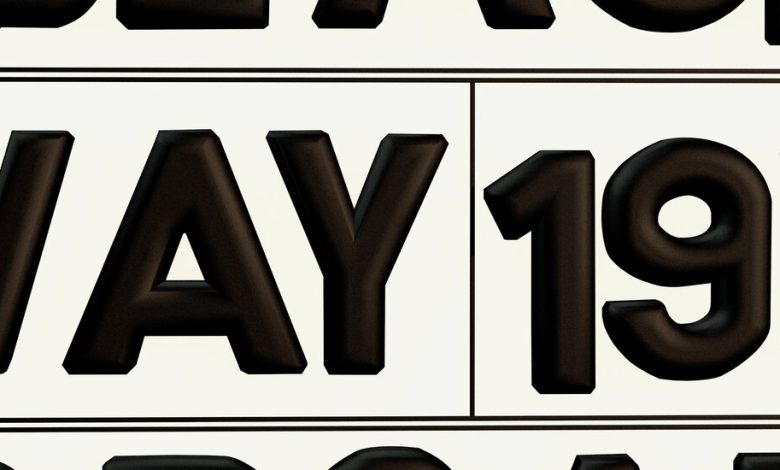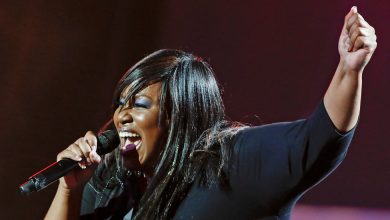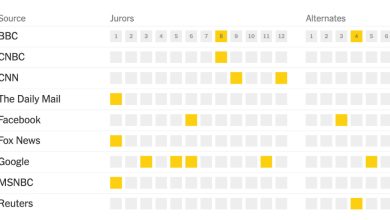The Black Musical That May Have Inspired Gershwin

I have, over the transom, received the paperback edition of a book that escaped me last year, to my regret. It is “When Broadway Was Black” by Caseen Gaines, and it is important first in that it recounts the story of a Black-created musical of 1921, “Shuffle Along,” that made some serious noise and may just have invented the modern Broadway musical. It was created by Black men, the pianist and composer Eubie Blake and the singer and lyricist Noble Sissle, and the cast was all Black.
It wasn’t the first Black musical on Broadway — there had been a few others, going back as early as the 1890s — but it was the first one that really landed in an epic way. It backed up traffic in front of its theater, sparked the career of Josephine Baker — who started out in its chorus line — and nearly 100 years later, in 2016, inspired a Broadway musical saluting its creation.
But “Shuffle Along” and its genesis are important to know about for reasons beyond the musical’s success at the time. Broadway wasn’t Black for a mere spell after “Shuffle Along” — it became Black permanently, just as the Godfrey Cambridge character turned from white to Black in Melvin Van Peebles’s 1970 film “Watermelon Man.”
Before this, it was apt that Broadway was called the Great White Way. Though the term was a reference to the bright marquees lining the street, Broadway’s music was, for the most part, quite white in a sense similar to what one might mean today. It toodled, it cooed, it marched. Sometimes it had a touch of ragtime in its step. But little of it stood out in an artistic sense. America had yet to develop a general, default theater music style it could be proud of internationally.
One of the hottest composers of the 1910s, for example, was Louis Hirsch. You likely have never heard the name, and there’s a reason. His work is, to the modern ear, almost bizarrely anodyne except for one passing hit, “Hello, Frisco.”
“Shuffle Along” is what changed this: It inaugurated what we now take for granted, the electricity of the Broadway sound. Only after “Shuffle Along” did Broadway music start consistently sounding like what we now know as show music.
Broadway theatergoers in 1921 likely didn’t know what it was to “jam.” Tapping their feet a little bit here and there, sure. But not in a sweaty, truly-into-the-moment way. “Shuffle Along” songs such as “I’m Just Wild About Harry,” “I’m Craving for That Kind of Love” and “If You Haven’t Been Vamped by a Brownskin, You Haven’t Been Vamped at All” were new to Broadway. (This was less true uptown, where Black Harlemites had been enjoying such numbers for some years before.) These proto-jazz songs and lively dance numbers were, in a word, hot. In its dances, “Shuffle Along” took a page from the way Black people beyond the bourgeoisie actually moved. The choreography gave audiences a blazing complement to Sissle and Blake’s songs.
To be sure, jazz and Broadway subsequently got even hotter — 102 years later, the roots of the songs from “Shuffle Along” in the prim skip-and-prance of ragtime are obvious. But it wasn’t just ragtime, and white theatergoers were blown away by the new feel. And if, like me, you are someone who has spent decades cursed by the obsession that leads to playing your way through the Broadway literature of the old days on the piano, you notice something important about the music of two composers associated with infusing jazz into the Broadway sound. Let’s first take George Gershwin.
The official story is that he gave show music a shot of jazz in 1924, with the Broadway production “Lady, Be Good,” which included “Fascinating Rhythm,” “‘The Half-of-It-Dearie’ Blues” and a few other songs with at least a catchy, jazzish feel. However, traditional Broadway musical history sidelines that just three years before “Lady, Be Good,” “Shuffle Along” delighted audiences with Broadway jazz. The question is why no one thinks of “Shuffle Along” and “Lady, Be Good” together.
I worship Gershwin’s work. Residences of his in the neighborhood where I work are marked with plaques, and I regularly slow down as I pass them and imagine the great man at work upstairs a century ago. But if you play through his theater music before 1921, most of the time you can’t help being — unless you are a musicologist or a fanatic — a little bored. There are some nice ones here and there, but largely he was writing what the market at the time wanted: post-Victorian “Ah, yes, dear” songs.
Only after 1921 do Gershwin’s songs become what we associate with his name. He can’t tell us why: He died too young to record an oral history of reminiscences or to be interviewed on television by the likes of Mike Douglas. But he is recorded to have avidly sat at the feet of seriously fierce Black swing pianists such as Willie “The Lion” Smith, and he saw “Shuffle Along.” (We know this from the musicologist Howard Pollack’s biography “George Gershwin: His Life and Work.”) His songs in “Lady, Be Good” were three years after “Shuffle Along,” and yet we can chart the change in his songs even in the interim. For example, the deathlessly bluesy “I’ll Build a Stairway to Paradise” — familiar to many from its recreation by Georges Guétary in the film “An American in Paris” — premiered onstage in 1922.
But by 1924, the “Lady, Be Good” score was wholly defined by the new sensibility. To people in 1924, “Lady, Be Good” was jazz all night. Pollack nails the feel of this score as “straightforward melodies rubbed up against chromatic harmonies and snappy syncopations,” as well as “a sort of hidden pathos.” In other words: jazz. But “Shuffle Along” had plowed this ground first, including the pathos: The ballad “Love Will Find a Way” has a modulation in its verse that captures real people grappling with the realities of existence in a fashion worthy of Ravel.
And it wasn’t just Gershwin. In the 1920s and 1930s, another top-drawer Broadway composer was Vincent Youmans. He died youngish and was not as productive or ambitious as Gershwin and is thus obscure today. But his keystone musical was the smash hit “No, No, Nanette,” which was up and running in Chicago in 1924 and got to Broadway in 1925. Aficionados cherish him as “the other Gershwin,” but I have always noticed that his work only matched that assessment after “Shuffle Along” in 1921. Barely a song of his before 1924 is “hot.” In contrast, the score of “No, No Nanette” is an explosion of jazz numbers. Youmans had been picking up on something.
This jazz feel settled in for good. It is fundamental to what we now think of as the vintage show tune. Would white composers have picked up on jazz by themselves given that it was so much in the air in general? Likely. But “Shuffle Along” did it first and showed the way. “Anything Goes,” “Annie Get Your Gun,” “Guys and Dolls,” “Funny Girl” — all of these classics have “Shuffle Along” in their musical DNA, as one of many channels through which jazz permeated the American musical landscape. The Broadway sound, despite how “white” we may classify it as today, represents one of many Black contributions to what America is.
John McWhorter (@JohnHMcWhorter) is an associate professor of linguistics at Columbia University. He is the author of “Nine Nasty Words: English in the Gutter: Then, Now and Forever” and, most recently, “Woke Racism: How a New Religion Has Betrayed Black America.”



